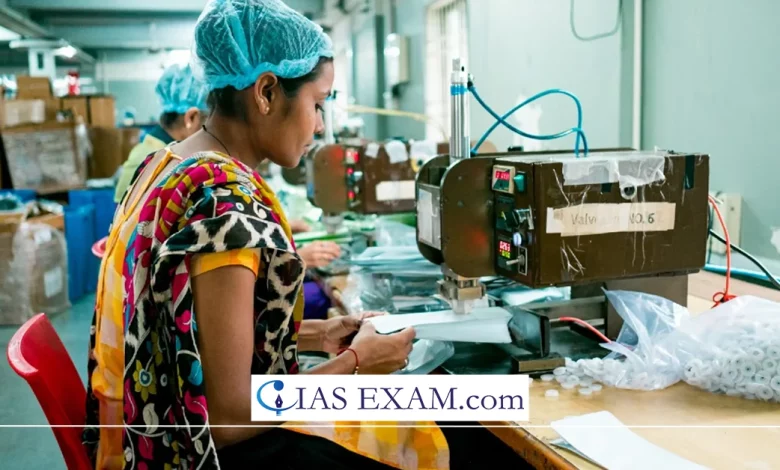India’s trade reliance on China and the European Union
Syllabus- International Relations [GS Paper-2]

Context
According to a report by the United Nations Conference on Trade and Development (UNCTAD), India’s trade reliance on China and the European Union is rising as global trade is witnessing a marked shift along geopolitical lines.
About
- The UNCTAD in its Global Trade Report has highlighted that after dealing with declines over several quarters, international trade is poised for a rebound in 2024.
- In 2023, global trade saw a 3% contraction, equalling $1 trillion, in comparison to the record high of $32 trillion in 2022.
- Available statistics for the first quarter of 2024 show a sustained improvement in global trade, in particular thinking about moderating global inflation and improving monetary growth forecasts.
- Additionally, rising demand for environmental items, especially electric powered automobiles, is predicted to bolster trade this year.
Highlights of the report with respect to India
- The document has highlighted that India’s trade reliance on China and the European Union is growing as global trade is witnessing a marked shift alongside geopolitical traces.
- It showed that India’s dependence on China and the European Union (EU) grew by 1.2 percent while its reliance on Saudi Arabia slid by 0.6 percent.
- This got here regardless of India’s efforts to cut reliance on China by imposing its flagship Production-Linked Incentive (PLI) scheme and Quality Control Orders (QCOs) in large part to restrict access to reasonably-priced Chinese products.
- UNCTAD’s estimates confirmed a chief shift in trade because of the ongoing Russia-Ukraine war.
- While Russia’s trade dependence on China surged by a record 7.1 percent, its reliance on the EU slid by 5.3 percent.
- This was largely a result of Russian oil moving from the EU to China and India.
- The dependence of an economy on other is calculated as the ratio of their bilateral trade over the overall trade of the based economy.
- trade is computed as a four-quarter common of this ratio relative to the same period in the previous year, the report said.
About United nations Conference on Trade & Development (UNCTAD)
-
- UNCTAD is a permanent inter-governmental frame established by the United Nations General Assembly in 1964.
- It is responsible for dealing with development issues, particularly international trade.
- Framing rules in numerous domains together with trade, technology, finance, aid, and shipping are the most important priorities of UNCTAD.
- The Conference in the main meets once in 4 years.
- The 2nd UNCTAD Conference occurred in New Delhi, India in 1968.
- Members: 195 countries
- Headquarters: Geneva, Switzerland
- Objectives of UNCTAD:
-
- UNCTAD, with its work in the national and global tiers, aims to help countries to:
- Understand options to cope with macro-level development challenges.
- Acquire useful integration into the global trading gadget.
- Reduce the dependency on commodities by diversifying the economies.
- Decrease their exposure to debt and economic volatility.
- Increase development-friendliness by attracting more investments.
- Increase technologies related to the digital sector.
- Give more thrust to innovation and entrepreneurship.
- Facilitate the easy flow of products across borders.
- Prevent consumer abuse.
- Competition should not be stifled; hence any concerned regulations would be cross-checked.
- Effectively utilize natural resources that would help in adapting to climate change.
- UNCTAD, with its work in the national and global tiers, aims to help countries to:
- Reports Published by UNCTAD:
-
- Trade and Development Report
- Trade and Environment Review
- World Investment Report
- Least Developed Countries Report
Source: The Indian Express
UPSC Prelims Practice Question
Q.Which of the following best describes the term ‘import cover’, sometimes seen in the news?(2016)
(a) It is the ratio of value of imports to the Gross Domestic Product of a country.
(b) It is the total value of imports of a country in a year.
(c) It is the ratio between the value of exports and that of imports between two countries.
(d) It is the number of months of imports that could be paid for by a country’s international reserves.
Ans – “d”





.png)



